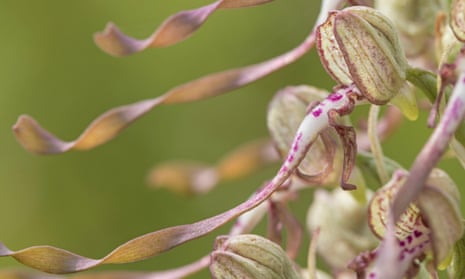On the lane leading down from the hamlet towards the Senesse stream, there are verges of a flowery profusion that always amaze and delight. The orchids are the stars of this show. The oolite and boulder clay hereabouts is the perfect habitat for them. I’ve seen them thrive elsewhere. Abandoned limestone quarries in the Welsh Marches or the Peak District, the dune slacks of Morfa Harlech, clearings in Newborough Forest – all can give fine displays. But for size, variety, proliferation, I’ve never encountered anywhere with quite these riches.
Orchidaceae are strange – capricious, spectacular, difficult to propagate (one reason among many never to steal them from their native habitat, as unscrupulous collectors are wont to do). I remember a woman at Llanymynech in tears at trowel holes that were all that remained of a colony of bee orchids that she had driven many miles to photograph. I could have wept too, though I’d confess to an ambivalence towards the species. Remember General Sternwood in The Big Sleep? “Nasty things,” he calls them; and Chandler is exactly right about the disturbing nature of orchids. Perhaps it’s the sense of symbiosis between saprophytic orchids and mycorrhizal fungus that unsettles? Or is it just their fleshy showiness? The specimens here are giants of their kind: lady orchids, man orchids, early purples, all growing above knee height, and a colony of a dozen or so lizard orchids tasselled and towering over them, reaching to my waist in silvery shimmering splendour.
I take an illuminated magnifier to the delicate tones, spottings and scrollings of their withering spires. Doing so makes me aware of the plant’s goatish reek, from which I recoil. Standing up, I can see over the bank into a newly cut hayfield where a female hen harrier is observing matters, her talons securely fixed into her perch on a bale wrapped in black plastic. Her gaze is intently upon a tubby brown shape that has just lolloped out from the boundary. I focus my distance glass on it as it squats and grazes. It’s a coypu! I’ve seen signs of them recently along the ruisseau. “Too big for you,” I mouth to the patient raptor. From the telegraph wire, a stonechat whistles its shrill warning.
